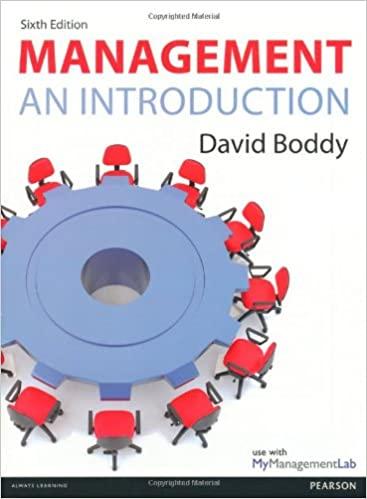Question
Article Caterpillar dominates the construction and earth-moving equipment industry, with $50 billion per year in revenues. However, Caterpillar has not been able to master the
Article
Caterpillar dominates the construction and earth-moving equipment industry, with $50 billion per year in revenues. However, Caterpillar has not been able to master the cyclical nature of its industry. When the heavy machinery industry booms, no one keeps up with demand, and everyone builds new factories and hires thousands of new employees. Indeed, Caterpillar doubled its workforce the last time global demand surged. But when the industry goes bust, factories are closed and tens of thousands of employees are laid off. What kind of dramatic swings does Caterpillar experience? A 43 percent spike in sales in April 2004 and a 52 percent decline in September 2009. Caterpillar's Doug Oberhelman had firsthand experience with an even larger sales swing in Argentina. He says, "We sold 1,200 machines a year in Argentina in the late '70s. In 1981, '82, and '83, while I was there, we sold four total."
In sudden downturns, Caterpillar learned to switch from selling new equipment to refurbishing used equipment. For customers, the advantages of taking apart, cleaning, repairing, and reassembling the engines, transmissions, and other major parts of heavy machinery are a new factory warranty and a 30 percent to 80 percent lower cost. Globally, the remanufacturing business is worth $100 billion a year, with profit margins as high as 40 percent. So, it has been a good way for Caterpillar to offset the boom-and-bust cycle to some extent.
The second way in which Caterpillar has dealt with sudden swings was to try to predict when they occurred. The problem, though, was that whereas company analysts could generally predict when a shift in sales would occur, they couldn't predict the severity. As a result, the last time a severe downturn occurred, Caterpillar laid off 35,000 managers and workers out of 120,000 worldwide. Furthermore, it cut executive compensation by 50 percent, senior manager pay by up to 35 percent, and manager and support staff pay by 15 percent.
You've just been named Caterpillar's next chief executive officer (CEO), and you've got six months before you take over from the current CEO. Caterpillar has entered a lot of businesses in the last two decades and every partgood, bad, and uglyis on the table for review. The critical issue is how to better manage the cyclical nature of your industry, particularly downturns. What can the company do to better prepare itself and its customers, suppliers, and dealers for the next severe downturn? Also, what are your goals for company performance for the next downswing? Given that there's little warning as to when downturns are coming, what can be done to make sudden increases in production more manageable for you and your suppliers? Finally, sudden upswings and downswings produce opportunities for your competitors to steal customers by undercutting price, delivering products faster, or designing better products. What can Caterpillar and its dealers do to decrease customer losses and defections? What can top management do to make sure it keeps a stronger focus on customers?
Question format
- State two facts from the article
- State two main issues in the article
- State Solution for each found issues from question 2,
Step by Step Solution
There are 3 Steps involved in it
Step: 1

Get Instant Access to Expert-Tailored Solutions
See step-by-step solutions with expert insights and AI powered tools for academic success
Step: 2

Step: 3

Ace Your Homework with AI
Get the answers you need in no time with our AI-driven, step-by-step assistance
Get Started


